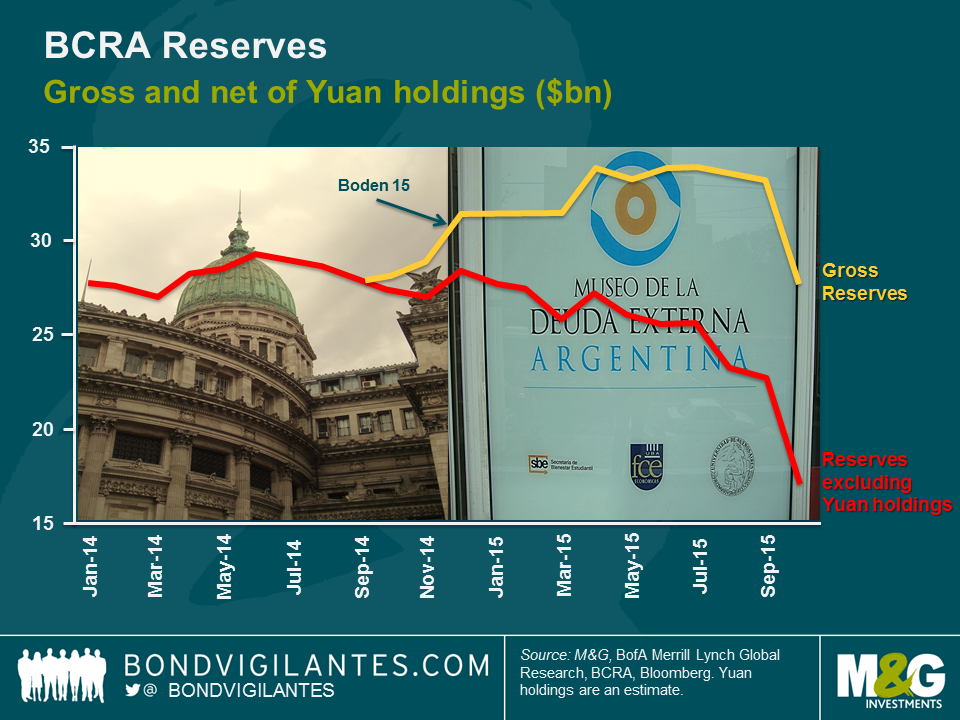The ABC of Latin American debt: Argentina trip report
I just spent two weeks traveling Latin America around the IMF meetings in Lima. The region is navigating through various shocks: lower commodity prices, deteriorating balance sheets, growth and fiscal deterioration, an urgent need for structural reforms and significant political challenges. There is plenty to write about, so in the next couple of days I will post a series of blogs focused on the ABC of Latin American debt: Argentina, Brazil and Colombia.
First stop, Argentina. Below is a summary of my trip, including what I believe are the key country issues and my impressions around them.
After a sleepless 13 hour red-eye flight from London, I decided to take it easy on my first day and make my touring day an educational one. The Argentine Congress and the External Debt Museum – both being related to market developments – seemed good visits for a warm up into my investor trip.
Officially back to the main purpose of my visit, the general elections happening this Sunday were one of the first topics to come up in conversations. There seems to be general consensus that the next administration will be better than the current one, which has helped Argentina’s hard currency debt to be the fourth best performing sovereign YTD. Although the elections are very close, there is the possibility that Daniel Scioli, the candidate who is closer to the existing government, wins in the first round. If he doesn’t, he will face a second round in November versus one of the two pro-market candidates (Mauricio Macri and Sergio Massa – Macri is currently ahead on the polls). I still think that Scioli will make it in the first round.
It is crystal clear what the country’s challenges are and what needs to be done. What is less clear is how gradual Scioli will be in addressing these challenges and how long his honeymoon with the markets will last. I expect the markets to allow him between 3 and 6 months before they start getting impatient and begin to test Scioli’s gradual and non-confrontational style.
Argentina faces a couple of challenges:
First, net international reserves have reached very low levels. Argentina’s access to the capital markets has been severely restricted due to the ongoing dispute with the debt holdouts. Until this is sorted, capital controls (“cepo”) remain in place, hindering foreign direct investment and maintaining elevated spreads as the country’s liquidity buffer vanishes. An agreement – at least with the main holdouts – is a necessary but not sufficient condition for stabilising the country’s challenging macroeconomic outlook. This would allow the country to gradually lift the capital controls, allowing for some foreign direct investment to resume and for the country to issue new external debt to recompose its reserves. An agreement will need to be rectified by the Argentine Congress, which despite no candidate achieving an absolute majority, is expected to pass. The devil is in the details.
Second, in addition to the holdout agreement, Argentina needs to move towards equilibrium in three areas:
a) The official exchange rate is clearly overvalued and will likely be devalued to some midpoint between the current official rate (9.50) and the parallel market (16.00), with a dual-exchange regime also being a possibility;
b) Real interest rates (Badlar) remain in negative territory and will need to rise for the devaluation to have some anchor;
c) The fiscal position (-6 to -7% of GDP) is unsustainable in the medium-term, unless growth rebounds strongly. At best however, we will see an adjustment of 1-2% through spending cuts and energy subsidy reduction in late Q1 2016.
In conclusion, I expect Argentine debt to continue to trade near current levels over the next few months, assuming a Scioli victory (and a rally should the opposition win, which is currently not priced in). I also see a binary scenario after Q2 2016: a sell-off to 12-13% yields should the issues listed above not be addressed adequately, or a rally to under 8% yields should they be.
The value of investments will fluctuate, which will cause prices to fall as well as rise and you may not get back the original amount you invested. Past performance is not a guide to future performance.


18 years of comment
Discover historical blogs from our extensive archive with our Blast from the past feature. View the most popular blogs posted this month - 5, 10 or 15 years ago!


Bond Vigilantes
Get Bond Vigilantes updates straight to your inbox






